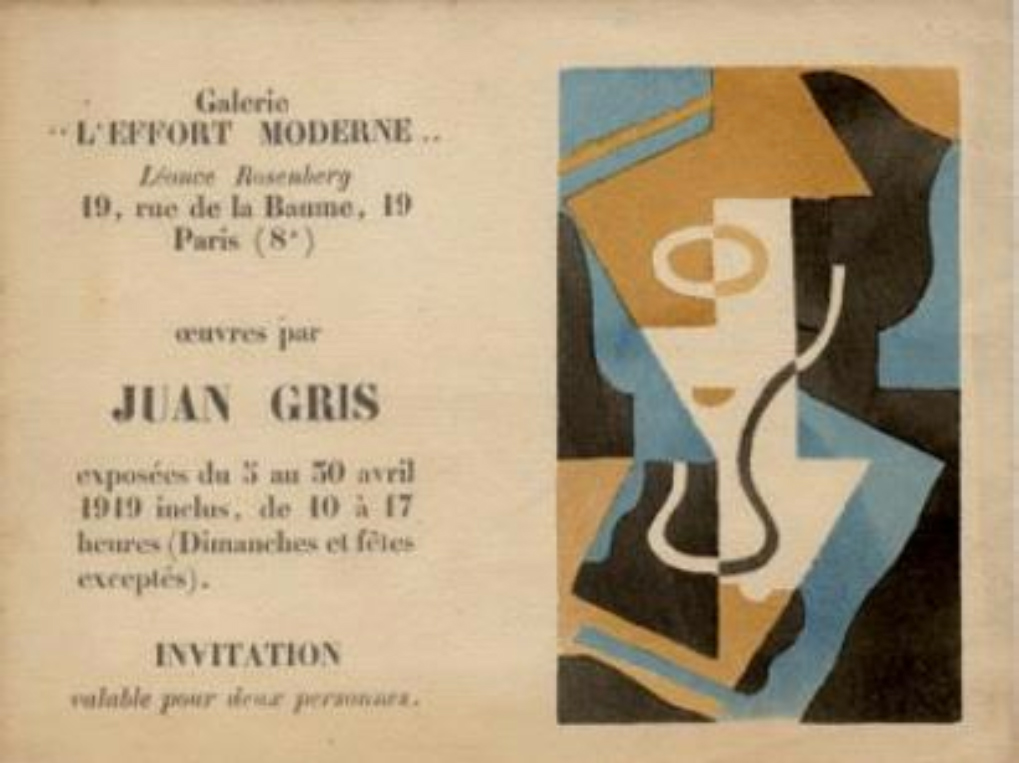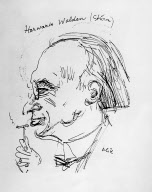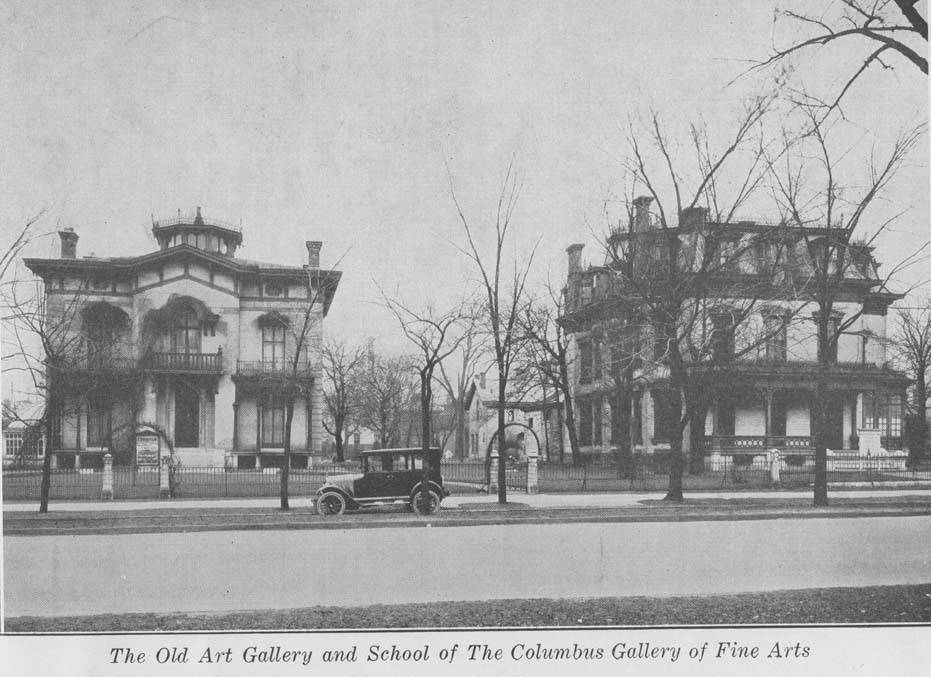|
Woman With A Fan (Metzinger)
''La Femme à l'Éventail'', or ''Woman with a Fan'', is a painting by the French artist Jean Metzinger. The work was exhibited in 1914 at Moderni Umeni, S.V.U. Mánes, Prague. A 1914 photograph taken at the exhibition in Prague was published in the magazine '' Zlatá Praha'' showing ''Woman with a Fan'' hanging next to another work by Metzinger known as '' En Canot (Im Boot, The Boat)'', 1913. Donated by Mr and Mrs Sigmund Kunstadter in 1959, ''Woman with a Fan'' forms part of the permanent collection in Gallery 391B (Medieval to Modern European Painting and Sculpture) at the Art Institute of Chicago, US. Description ''Woman with a Fan'', signed ''JMetzinger'' (lower left) is an oil painting on canvas with dimensions 92.7 x 65.7 cm (36 1/2 x 25 7/8 in.), representing an elegantly dressed Parisian woman, perhaps Lucie Soubiron, whom Metzinger married in 1909, painted in a geometrically Cubist style with a stylish feathered or plumed hat while holding a fan (visible to the ... [...More Info...] [...Related Items...] OR: [Wikipedia] [Google] [Baidu] |
Jean Metzinger
Jean Dominique Antony Metzinger (; 24 June 1883 – 3 November 1956) was a major 20th-century French painter, theorist, writer, critic and poet, who along with Albert Gleizes wrote the first theoretical work on Cubism. His earliest works, from 1900 to 1904, were influenced by the neo-Impressionism of Georges Seurat and Henri-Edmond Cross. Between 1904 and 1907 Metzinger worked in the Divisionist and Fauvist styles with a strong Cézannian component, leading to some of the first proto-Cubist works. From 1908 Metzinger experimented with the faceting of form, a style that would soon become known as Cubism. His early involvement in Cubism saw him both as an influential artist and an important theorist of the movement. The idea of moving around an object in order to see it from different view-points is treated, for the first time, in Metzinger's ''Note sur la Peinture'', published in 1910.Jean Metzinger, October–November 1910, "Note sur la peinture" Pan: 60 Before the emergence ... [...More Info...] [...Related Items...] OR: [Wikipedia] [Google] [Baidu] |
Pablo Picasso
Pablo Ruiz Picasso (25 October 1881 – 8 April 1973) was a Spanish painter, sculptor, printmaker, ceramicist and theatre designer who spent most of his adult life in France. One of the most influential artists of the 20th century, he is known for co-founding the Cubist movement, the invention of constructed sculpture, the co-invention of collage, and for the wide variety of styles that he helped develop and explore. Among his most famous works are the proto-Cubist '' Les Demoiselles d'Avignon'' (1907), and the anti-war painting '' Guernica'' (1937), a dramatic portrayal of the bombing of Guernica by German and Italian air forces during the Spanish Civil War. Picasso demonstrated extraordinary artistic talent in his early years, painting in a naturalistic manner through his childhood and adolescence. During the first decade of the 20th century, his style changed as he experimented with different theories, techniques, and ideas. After 1906, the Fauvist work of the sli ... [...More Info...] [...Related Items...] OR: [Wikipedia] [Google] [Baidu] |
1913 Paintings
Events January * January 5 – First Balkan War: Battle of Lemnos – Greek admiral Pavlos Kountouriotis forces the Turkish fleet to retreat to its base within the Dardanelles, from which it will not venture for the rest of the war. * January 13 – Edward Carson founds the (first) Ulster Volunteer Force, by unifying several existing loyalist militias to resist home rule for Ireland. * January 23 – 1913 Ottoman coup d'état: Ismail Enver comes to power. * January – Stalin (whose first article using this name is published this month) travels to Vienna to carry out research. Until he leaves on February 16 the city is home simultaneously to him, Hitler, Trotsky and Tito alongside Berg, Freud and Jung and Ludwig Wittgenstein, Ludwig and Paul Wittgenstein. February * February 1 – New York City's Grand Central Terminal, having been rebuilt, reopens as the world's largest railroad station. * February 3 – The 16th Amendment to the Unite ... [...More Info...] [...Related Items...] OR: [Wikipedia] [Google] [Baidu] |
Paintings By Jean Metzinger
Painting is the practice of applying paint, pigment, color or other medium to a solid surface (called the "matrix" or "support"). The medium is commonly applied to the base with a brush, but other implements, such as knives, sponges, and airbrushes, can be used. In art, the term ''painting ''describes both the act and the result of the action (the final work is called "a painting"). The support for paintings includes such surfaces as walls, paper, canvas, wood, glass, lacquer, pottery, leaf, copper and concrete, and the painting may incorporate multiple other materials, including sand, clay, paper, plaster, gold leaf, and even whole objects. Painting is an important form in the visual arts, bringing in elements such as drawing, composition, gesture (as in gestural painting), narration (as in narrative art), and abstraction (as in abstract art). Paintings can be naturalistic and representational (as in still life and landscape painting), photographic, abstract ... [...More Info...] [...Related Items...] OR: [Wikipedia] [Google] [Baidu] |
Léonce Rosenberg
Léonce Rosenberg (12 September 1879 in Paris – 31 July 1947 in Neuilly-sur-Seine) was an art collector, writer, publisher, and one of the most influential French art dealers of the 20th century. His greatest impact was as a supporter and promoter of the cubists, especially during World War I and in the years immediately after. Early life The son of an antique dealer Alexandre Rosenberg and brother of the gallery owner Paul Rosenberg (art dealer), Paul Rosenberg (21 rue de la Boétie, Paris), Léonce Rosenberg attended the Lycée Rollin in Paris followed by commercial training in Antwerp and London as well as travels to Berlin, Vienna and New York. Léonce Rosenberg took the opportunity to visit galleries and museums to broaden his artistic knowledge and appreciation, and to develop contacts in the art world. After returning to Paris he worked with his brother Paul in the family business. In 1906 Léonce and his brother took over the running of the family gallery, then on Avenu ... [...More Info...] [...Related Items...] OR: [Wikipedia] [Google] [Baidu] |
Herwarth Walden
Herwarth Walden (actual name Georg Lewin; 16 September 1879, in Berlin – 31 October 1941, in Saratov, Russia) was a German expressionist artist and art expert in many disciplines. He is broadly acknowledged as one of the most important discoverers and promoters of German avant-garde art in the early twentieth century (Expressionism, Futurism, Dadaism, Magic Realism). He was best known as the founder of the Expressionist magazine ''Der Sturm'' (The Storm) and its offshoots. Biography He studied composition and piano at the music academies of Berlin and Florence. However, his interest embraced all arts. So he became a musician, composer, writer, critic, and gallery owner. He was best known as the founder of the expressionist magazine ''Der Sturm'' (The Storm) and its offshoots. These consisted of a publishing house and journal, founded in 1910, to which he added an art gallery two years later. He discovered, sponsored and promoted many young, still unknown artists of different s ... [...More Info...] [...Related Items...] OR: [Wikipedia] [Google] [Baidu] |
Gino Severini
Gino Severini (7 April 1883 – 26 February 1966) was an Italian painter and a leading member of the Futurist movement. For much of his life he divided his time between Paris and Rome. He was associated with neo-classicism and the "return to order" in the decade after the First World War. During his career he worked in a variety of media, including mosaic and fresco. He showed his work at major exhibitions, including the Rome Quadrennial, and won art prizes from major institutions. Early life Severini was born into a poor family in Cortona, Italy. His father was a junior court official and his mother a dressmaker. He studied at the Scuola Tecnica in Cortona until the age of fifteen, when he and a group of fellow-classmates were expelled from the entire Italian school system for the attempted theft of exam papers. The boys escaped a custodial sentence but Severini never again attended formal education. For a while he worked with his father; then in 1899 he moved to Rome with his ... [...More Info...] [...Related Items...] OR: [Wikipedia] [Google] [Baidu] |
Fernand Léger
Joseph Fernand Henri Léger (; February 4, 1881 – August 17, 1955) was a French painter, sculptor, and filmmaker. In his early works he created a personal form of cubism (known as "tubism") which he gradually modified into a more figurative, populist style. His boldly simplified treatment of modern subject matter has caused him to be regarded as a forerunner of pop art. Biography Léger was born in Argentan, Orne, Lower Normandy, where his father raised cattle. Fernand Léger initially trained as an architect from 1897 to 1899, before moving in 1900 to Paris, where he supported himself as an architectural draftsman. After military service in Versailles, Yvelines, in 1902–1903, he enrolled at the School of Decorative Arts after his application to the École des Beaux-Arts was rejected. He nevertheless attended the Beaux-Arts as a non-enrolled student, spending what he described as "three empty and useless years" studying with Gérôme and others, while also studying at the Ac ... [...More Info...] [...Related Items...] OR: [Wikipedia] [Google] [Baidu] |
Columbus Museum Of Art
The Columbus Museum of Art (CMA) is an art museum in downtown Columbus, Ohio. Formed in 1878 as the Columbus Gallery of Fine Arts (its name until 1978), it was the first art museum to register its charter with the state of Ohio. The museum collects and exhibits American and European modern and contemporary art, folk art, glass art, and photography. The museum has been led by Executive Director Nannette Maciejunes since 2003. History The CMA was founded in 1878 as the Columbus Gallery of Fine Arts. Beginning in 1919, it was housed in the Francis C. Sessions house, a founder of Columbus Art School (later known as Columbus College of Art and Design (CCAD). Sessions deeded the mansion and property to the art museum, which operated there until 1923. The house was demolished, with the current museum built on its site. CCAD's Beaton Hall includes elements from the entranceway of the Sessions house. The current building was built on the same site from 1929 to 1931, opening on Janua ... [...More Info...] [...Related Items...] OR: [Wikipedia] [Google] [Baidu] |
Museo Nacional Centro De Arte Reina Sofía
The ''Museo Nacional Centro de Arte Reina Sofía'' ("Queen Sofía National Museum Art Centre"; MNCARS) is Spain's national museum of 20th-century art. The museum was officially inaugurated on September 10, 1992, and is named for Queen Sofía. It is located in Madrid, near the Atocha train and metro stations, at the southern end of the so-called Golden Triangle of Art (located along the Paseo del Prado and also comprising the Museo del Prado and the Museo Thyssen-Bornemisza). The museum is mainly dedicated to Spanish art. Highlights of the museum include excellent collections of Spain's two greatest 20th-century masters, Pablo Picasso and Salvador Dalí. The most famous masterpiece in the museum is Picasso's 1937 painting ''Guernica''. Along with its extensive collection, the museum offers a mixture of national and international temporary exhibitions in its many galleries, making it one of the world's largest museums for modern and contemporary art. In 2021, due to the COVI ... [...More Info...] [...Related Items...] OR: [Wikipedia] [Google] [Baidu] |
Juan Gris
José Victoriano González-Pérez (23 March 1887 – 11 May 1927), better known as Juan Gris (; ), was a Spanish painter born in Madrid who lived and worked in France for most of his active period. Closely connected to the innovative artistic genre Cubism, his works are among the movement's most distinctive. Life Gris was born in Madrid and later studied engineering at the Madrid School of Arts and Sciences. There, from 1902 to 1904, he contributed drawings to local periodicals. From 1904 to 1905, he studied painting with the academic artist José Moreno Carbonero. It was in 1905 that José Victoriano González adopted the more distinctive name Juan Gris. In 1909, Lucie Belin (1891–1942)—Gris' wife—gave birth to Georges Gonzalez-Gris (1909–2003), the artist's only child. The three lived at the Bateau-Lavoir, 13 Rue Ravignan, Paris, from 1909 to 1911. In 1912 Gris met Charlotte Augusta Fernande Herpin (1894–1983), also known as Josette. Late 1913 or early 1914 they li ... [...More Info...] [...Related Items...] OR: [Wikipedia] [Google] [Baidu] |








